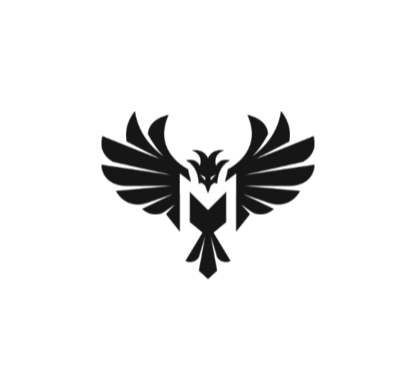1. What Makes the Lebanese Accent Unique?
The Lebanese accent is a type of Levantine Arabic, which is spoken in Lebanon, Syria, Jordan, and Palestine. While it shares many similarities with other Levantine dialects, it also has distinctive features that set it apart. Understanding the key elements of the Lebanese accent will help you master it more effectively.
1.1 Melodic Nature of the Accent
One of the most noticeable aspects of the Lebanese accent is its melodious, musical quality. Lebanese Arabic tends to have a rhythm that is faster and more fluid compared to other Arabic dialects. This rhythm is one of the key elements that gives Lebanese Arabic its unique sound.
1.2 Influence of French and English
Due to Lebanon's history of French and English influence, the Lebanese accent includes many French and English loanwords. If you’re already familiar with French or English, you might recognize some of these words and phrases. For instance, “Bonjour” (French for "Hello") and “merci” (French for “thank you”) are often used in daily conversations.
2. Key Pronunciation Features of the Lebanese Accent
The Lebanese accent, like all Arabic dialects, has its own set of pronunciation rules that differ from Modern Standard Arabic (MSA). Here are some of the key features of the Lebanese accent that learners should focus on:
2.1 Vowel Pronunciation
In Lebanese Arabic, vowels are often pronounced differently than in MSA. While Arabic has three primary vowels (a, i, u), the Lebanese dialect tends to have more fluid and varied vowel sounds. This can be challenging for learners, especially when trying to match the sounds to the correct letters in the Arabic script.
-
The letter “ع” (Ayn) is pronounced with a deeper throat sound in MSA, but in Lebanese Arabic, it's often softened.
-
The vowel sound “u” is pronounced as a short “o” sound. For example, the word “shukran” (thank you) might sound closer to “shokran” in Lebanese Arabic.
-
The “a” sound is also often elongated, especially in the middle of words.
2.2 Dropped Consonants
In the Lebanese accent, certain consonants are often dropped or softened, making the speech sound faster and more fluid. For instance:
-
The letter "ق" (Qaf) is pronounced as a hard “k” sound in Lebanese Arabic rather than the deep “q” sound in MSA. So, “Qamar” (moon) in MSA becomes “Kamar” in Lebanese Arabic.
-
The “ت” (Teh) is often softened to a "t" sound and may be dropped in some words.
2.3 Intonation and Stress Patterns
Lebanese Arabic has a distinct stress pattern. Words are often stressed on the second or third syllable, and this pattern contributes to the flow and musicality of the language. For example, "shou fiik" (what’s up) has a stress on the second syllable, while "yalla" (let’s go) has a more balanced tone.
2.4 Use of the Letter "J"
In Lebanese Arabic, the letter “ج” (Jeem) is pronounced as a soft “g” sound, unlike in some other Arabic dialects where it is pronounced as a hard “j” (like “j” in “jug”). For example, “Jamal” (beauty) is pronounced “Gamal” in Lebanese Arabic.
3. Common Pronunciation Challenges for Learners
When learning the Lebanese accent, learners often face specific pronunciation challenges. Let’s look at some of the most common difficulties and how to overcome them:
3.1 Mastering the "ع" (Ayn) Sound
The “ع” (Ayn) sound is a deep, guttural sound that’s difficult for many non-native speakers. In Lebanese Arabic, this sound is somewhat softened compared to other Arabic dialects, but it still requires practice. Focus on pronouncing the sound from the back of the throat, and practice by listening to native speakers.
3.2 Softening the "ق" (Qaf) Sound
As mentioned, the "ق" (Qaf) sound is often pronounced as a “k” sound in Lebanese Arabic. Many learners find it difficult to transition from the hard “q” sound to the softer “k” sound. Listening to native speakers and repeating words with this sound is the best way to get the hang of it.
3.3 Dropping Consonants
The tendency to drop consonants in the Lebanese accent can make speech sound less formal and more casual. For example, “ماذا” (Mada) meaning "what" in MSA, becomes “Shoo” in Lebanese Arabic. Practice listening to conversations where this happens to better understand the rhythm and flow.
4. Lebanese Accent vs. Other Arabic Accents
When comparing the Lebanese accent to other Arabic dialects, there are several key differences that stand out. Here’s how it stacks up against some of the other prominent accents:
4.1 Lebanese vs. Egyptian Accent
The Egyptian accent is widely known for its distinct intonation and pronunciation. Unlike the Lebanese accent, which is soft and melodic, the Egyptian accent has a more pronounced rhythm and sharper consonants. Egyptian Arabic also has more noticeable vowel shifts than Lebanese Arabic, where vowels are softer and more fluid.
4.2 Lebanese vs. Syrian Accent
The Lebanese accent and Syrian accent share many similarities, given that they both belong to the Levantine group of dialects. However, Lebanese Arabic is generally faster-paced and tends to soften certain consonants more than Syrian Arabic, which can have a clearer enunciation of the “qaf” and “ayn” sounds.
4.3 Lebanese vs. Gulf Accent
Gulf Arabic, spoken in countries like Saudi Arabia, the UAE, and Qatar, differs significantly from Lebanese Arabic. Gulf Arabic is often harsher in tone, with more emphasis on certain consonants. The Lebanese accent, on the other hand, is more melodious and tends to soften certain letters.
5. Tips for Mastering the Lebanese Accent
If you want to speak Lebanese Arabic with a more authentic accent, here are some practical tips to help you improve your pronunciation:
5.1 Listen to Native Speakers
One of the best ways to learn the Lebanese accent is by listening to native speakers. Watch Lebanese TV shows, movies, or YouTube channels, and pay attention to the rhythm and pronunciation. Popular Lebanese singers, such as Fairouz, Ziad Rahbani, and Ragheb Alama, also offer great material for listening practice.
5.2 Repeat What You Hear
Once you’ve listened to native speakers, repeat the words and phrases you hear. Practice mimicking their accent, rhythm, and tone. Don’t worry about making mistakes, just focus on sounding as natural as possible.
5.3 Engage in Conversation
To truly master the Lebanese accent, you’ll need to practice speaking it regularly. Engage with native speakers or language partners. There are online language exchange platforms where you can connect with Lebanese speakers for conversational practice.
5.4 Use Phonetic Resources
To perfect your pronunciation, make use of phonetic resources that can help guide you in mastering the sounds of Lebanese Arabic. Online tools, pronunciation guides, and video lessons can help break down tricky sounds and teach you the correct mouth movements.
5.5 Practice, Practice, Practice
Like any language skill, mastering the Lebanese accent takes time and consistent practice. Don’t get discouraged if it takes a while to get the hang of it. Keep practicing, and soon you’ll start to notice improvements in your pronunciation and confidence.
6. Where to Learn the Lebanese Accent
If you’re serious about mastering the Lebanese accent, consider enrolling in a Lebanese Arabic course. Online platforms like The Spoken Arabic offer structured lessons that focus on pronunciation, intonation, and vocabulary specific to Lebanese Arabic.
Conclusion
The Lebanese accent is an integral part of the Lebanese culture, and mastering it will help you speak Lebanese Arabic with confidence and authenticity.


